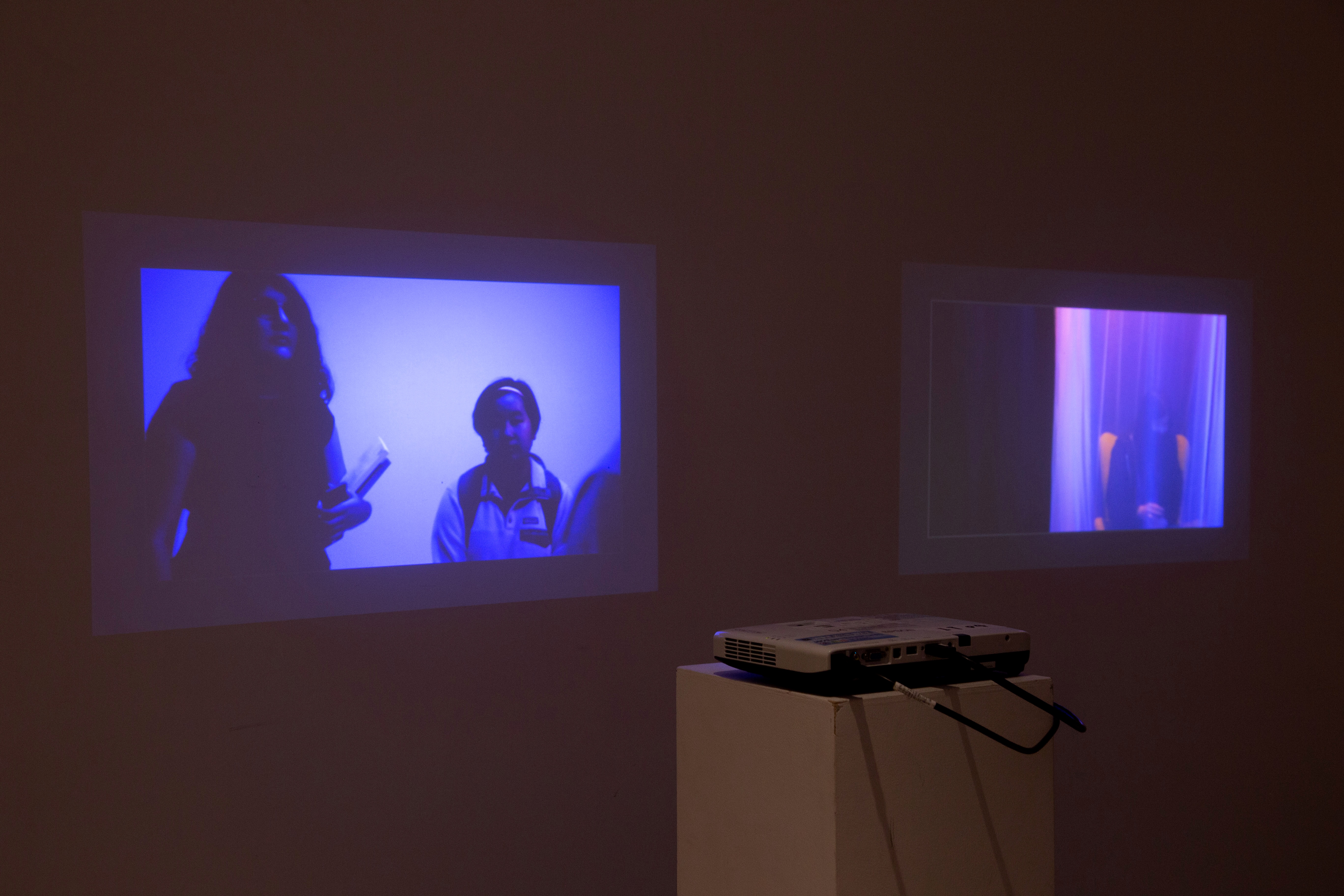The Scene Inside
A cinematic installation that uses the stylistic devices of film (light/shadow, colors, and sound) to create an immersive experience of troubled inner mental states, in order to help people have a deeper understanding of mental problems.
︎︎︎video setup outside
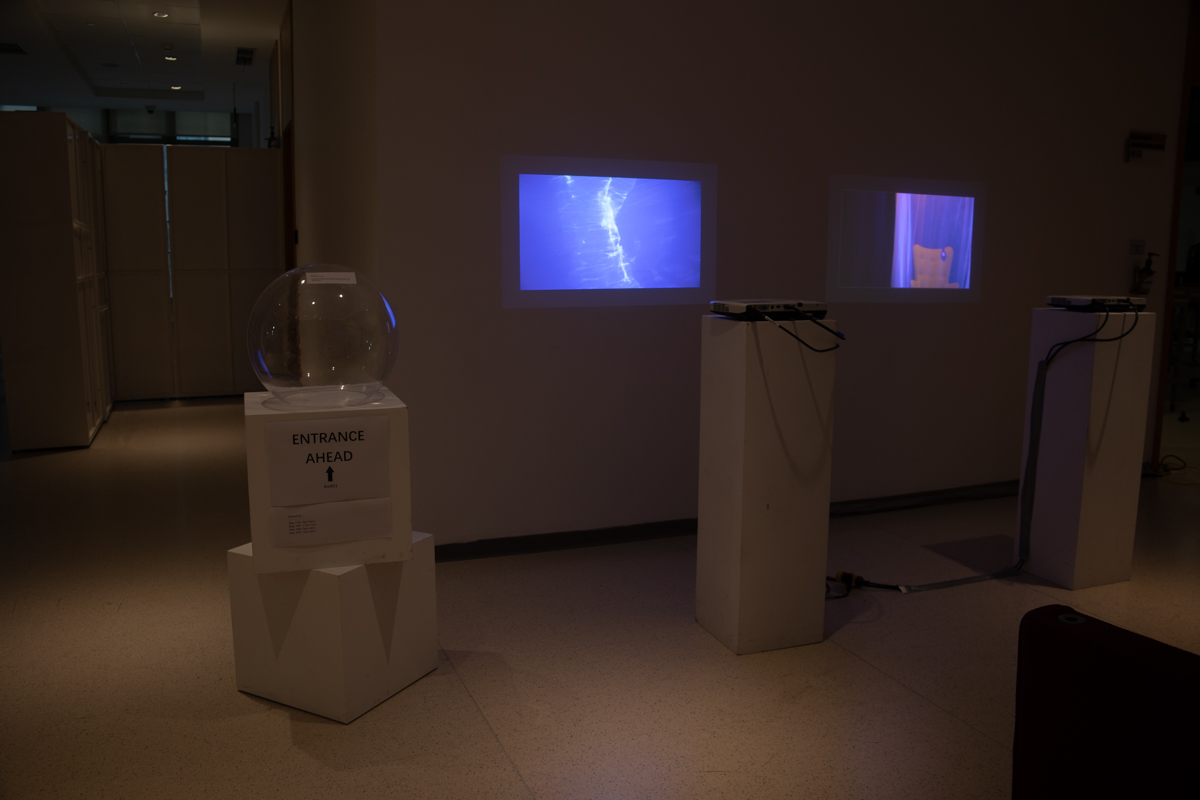
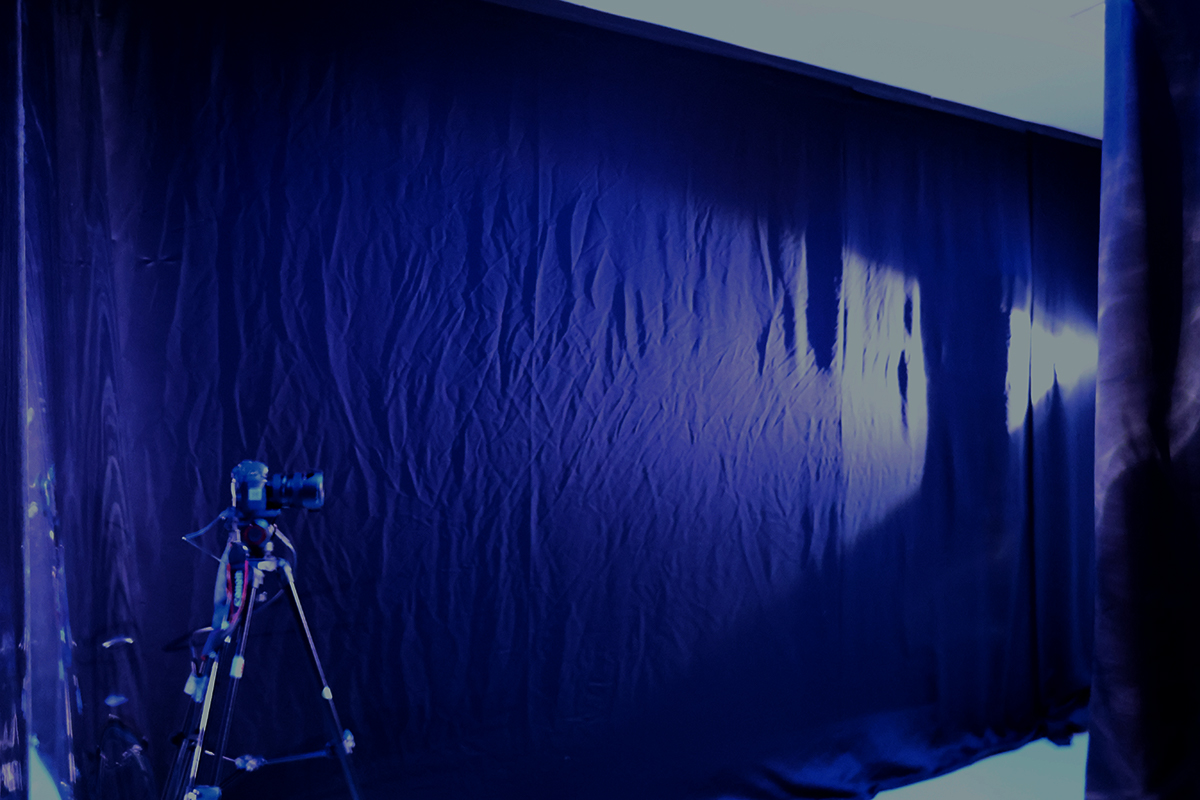
︎︎︎doorway of the inside room
︎︎︎the chaotic space
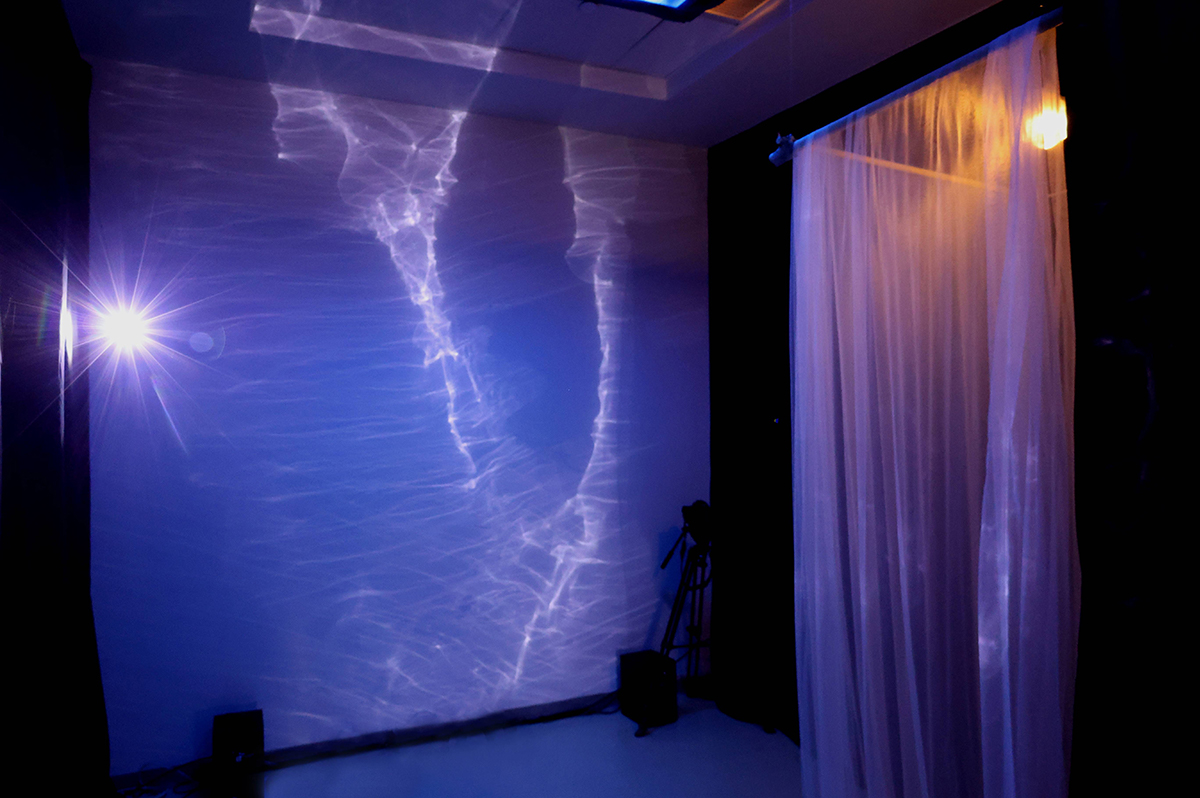
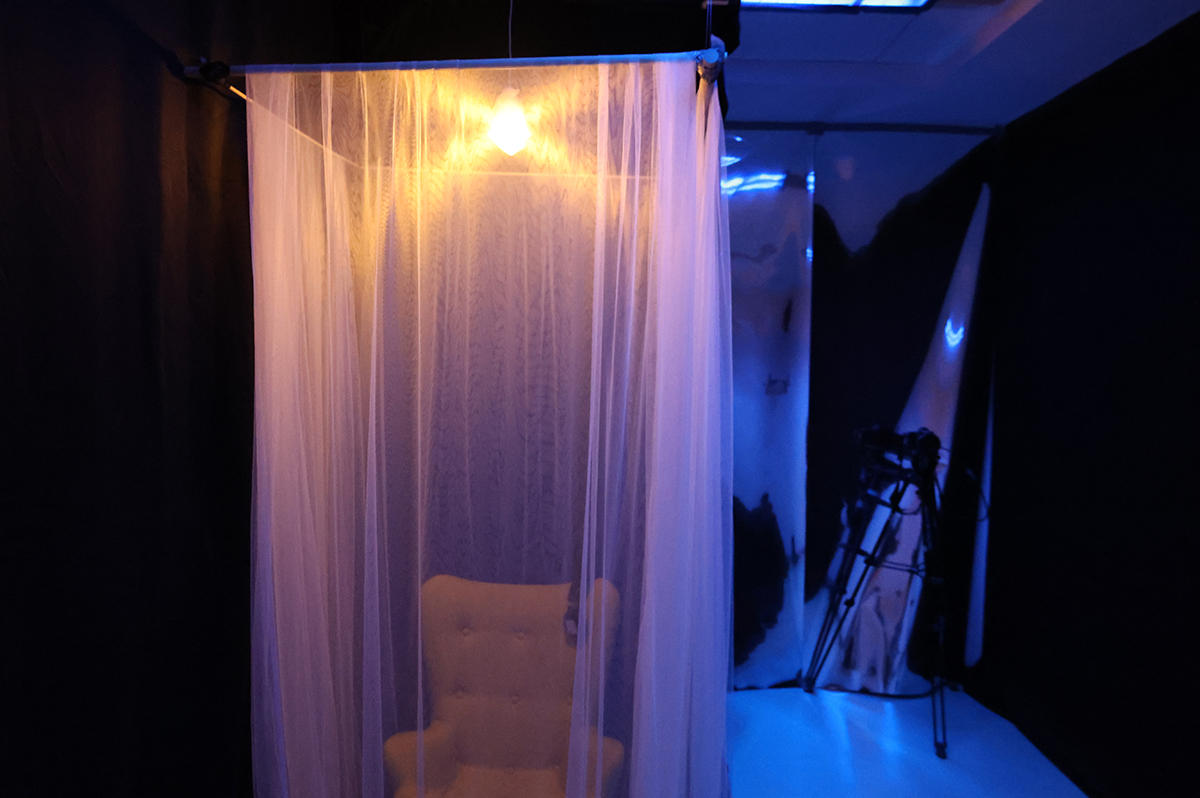
︎︎︎the comforting space
© 2021 Skyler Zhijing Liu. The chaotic space's sound samples from Thunderstorm for Relaxing Sleep, pt. 34 - Sleepy Times; Rectum - Thomas Bangalter. The comforting space's sound is composed by 深呼吸.
︎Production Book
I. Conceptual Research Question
Many films and television shows can successfully depict characters with disturbing inner mental states. The most dramatic scenes can give the audience a profound impression of the character’s troubled mental world without the use of dialogue. Beyond the obvious narrative devices of film – storyline, dialogue, characters, and themes – what are the techniques particular to video that allow it to express the characters’ inner mental states?
II. Practice Research Question
Research for this project takes the form of an exploratory study. The aim is to examine how particular stylistic devices of films contribute to express characters’ disturbing inner mental states. The stylistic devices - lighting, color, framing, camera angles, editing techniques (eg. pacing) - were selected based on Film theory (Bordwell, D. 1997. On the history of film style). The top three aesthetic features that are crucial for expressing characters’ mental states revealed by the study will be particularly taken into consideration while designing the later artwork. Thus, this study combines media effects and film literature to empirically study the emotional impact of the aesthetic features of film on media audiences.
III. Research
Research for this project began by selecting and watching various films that were known for effectively depicting characters with troubled inner mental states or complex emotions. In the end, my research has focused on the following three 3 films: Blade Runner 2049 (2017), Possession (1981), and The Double Life of Veronique (1991).
I first looked for scenes of high emotional tension according to the viewer's emotional response and experience in the three films, and then marked down the moments and took screenshots of the scenes. Ten scenes from each film that were particularly good at manifesting the aesthetic features specified by this project were selected for the study.
My screenshots collection for the study:


Based on the analysis, it was clear to see, among all the stylistic devices, three techniques stood out for creating the emotional atmosphere in those scenes, which were light and shadow, color tone, and sound. The three aesthetic features were later applied into different forms of re-creations of the selected scenes. By comparing the re-creation of different art forms, the most effective form to create emotional effects was derived from it - an installation artwork.
IV. Deciding the art form
I made re-creations of some selected scenes in different forms such as collage, soundscape, and photography, and I noticed that these forms either can only conclude a very limited part of dimensions of film, or cannot transcend the effect of the film.
My collage & soundscape re-creations:


The collage could only apply film’s aesthetic feature of color; the soundscape could only make a single application of the sound design; photography could only apply lighting and color, and the original form of video could not create a more immersive effect for the audience because lacking a sense of presence.
My photographic re-creations:


I finally decided on an art form that can combine all three important aesthetic features of film together, and have a real-time dimension more than film - it was installation art. In an installation artwork, the artist can set up light & shadow, colors, and sound in the way film does for expressing inner mental states. Also, it can create a space for the audience to be immersed in real-time. Thus, it became the best form to be applied to this project.
V. Design the installation
The scene I planned to depict was in an empty room, which would be dominated by cold blue lighting, but the overall lighting would be dim, combining music which had a heavy and unpleasant tone, making the entire environment like in the deep ocean. There would be a floating transparent acrylic box in the middle with a cushion that allows the visitor to stand or sit inside.
First Design Sketch:
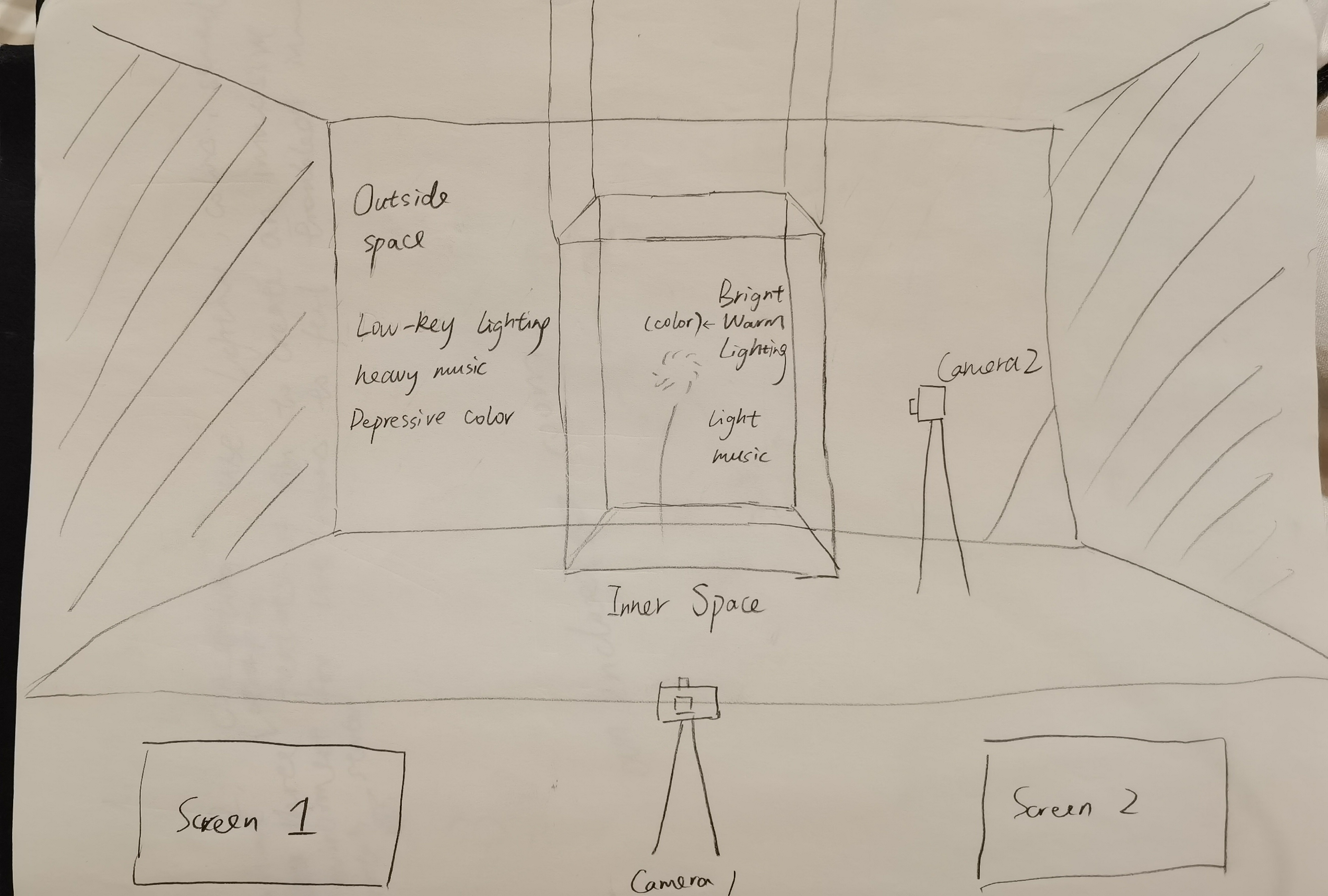
The metaphor of a depressing experience would be completed together by the setting and the visitor who walked into the room: there’s nowhere safe for you, the inside enclosed box is the only place, but it means to shut yourself down.
The room would only allow one visitor to go inside per time, people waiting outside can see the scene inside through two real-time recordings of inside. In this way, the work would have part of the form in “film”, but also keep the immersive function of the installation art form.
VI. Prototypes
The first prototype used a kind of soft PVC material to make the interior room and LED lighting panels with blue and red filter paper for the main room, yellow paper for the interior room. I didn’t distinguish the sounds of two different spaces in the first prototype. Cameras and screens haven’t been setup.
PVC interior room and LED lighting in Prototype 1:


First Prototype:
VI. Peer-Review
“The idea is meaningful and I look forward to seeing the final effect.”
“I hope to see a completed version of this project!”
“The interior room smells like bath room, probably because of its material.”
“The comforting space’s material doesn’t feel soft enough.”
“The atmosphere is nice but maybe it’s too comforting for the chaotic room.”
“The basic idea can be got but maybe the comforting room should be more comforting and the chaotic room can be more chaotic.”
“The colors are great. Blue is a cold key and the inner warm yellow is mild.”
“The sounds in both spaces sould be more developed to convey the different meanings.”
VII. Second Prototype
I edited a soundtrack for the chaotic room using Adobe Audition, sampled from Thunderstorm for Relaxing Sleep, pt. 34 - Sleepy Times; Rectum - Thomas Bangalter. And my friend 深呼吸’s composition was chosen to be the soundtrack for the comforting space.

As many people in the peer-review suggested the inner room should be softer, I decided to choose a kind of fabric to be the material for the inner room. I ordered many kinds of sample fabric that could be considered as transparent and put them in the prototype to see which one served the theme best. A kind of soft white gauze stood out and was chosen to be the final material.
Order history & the final selected fabric:


I decide to add a thunderstorm / seawave lighting effect in the chaotic room to enhence the room’s chaotic atmosphere. I met with two professionals working in the film industry. One person is a lighting designer working for stage and film, the other is a film editor currently working in a film studio.
I learned that water pool can create water wave reflection to the wall by carefully calculating the incident angle. The cast-coated paper can also be used to create similar reflections.
Documentation for the lighting methods:

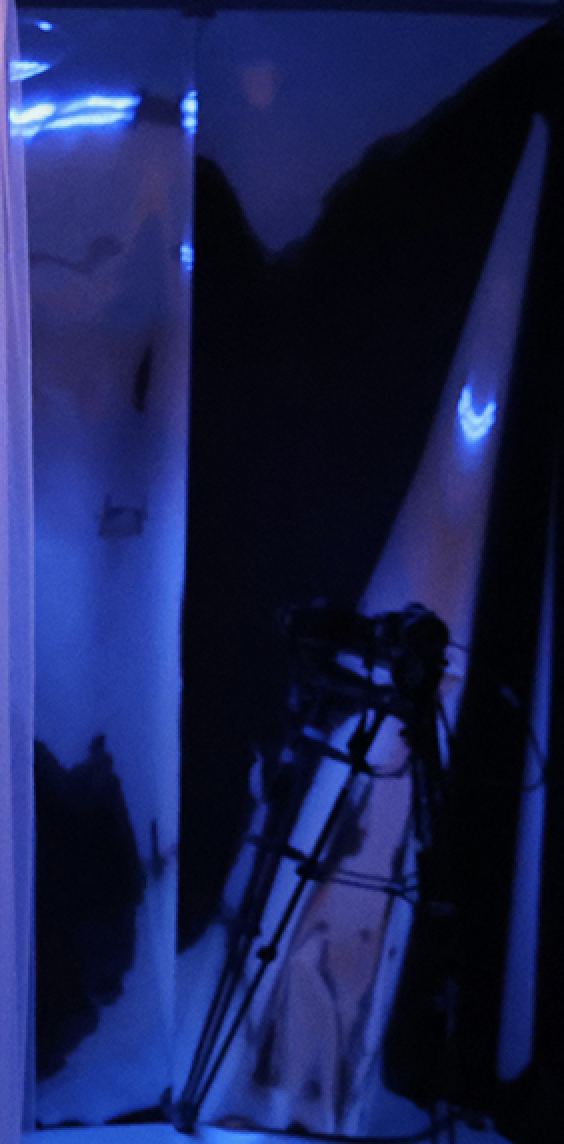
Due to the space limitation, I chose to experiment with the cast-coated paper, a flashlight, and a rotating motor behind the paper to make the paper’s reflection dynamic, creating a more anxious effect. They worked successful.
I set two surround-sound speakers in the chaotic room and a pair of noise-canceling headphones for the comforting room’s music, and experimented with the camera positions and screens (projecters) outside the room for the second prototype.
VIII. Final Work
I sticked doubel-layer Primary Blue filter paper to the lights on the ceiling and black cloth around the room to make the main room entirely immersed in a low-key blue enviroment. The low-key lighting and sound design made many visitors feel sick in the chaotic room (which was exactly the effect I wanted), and they soon got relaxed in the comforting room; several visitors stayed in the comforting room for almost half an hour.
Lighting & careful wire setup for the final work:


Final Layout sketch map:

VX. Results
The final result was satisfactory to me as it was my first attemp to combine the techniques of film and interactive media arts. Many audiences gave me valuable comments, some of them even said my project should be seen in the museum due to the profound meaning and successful effects. I was proud that I made this installation as my capstone project for IMA.
I also confirmed my own pursuit during this project. As a visual aritist, I want to be a voice of disadvantaged groups through my artworks, letting the world hear them, feel them, and united with them.
